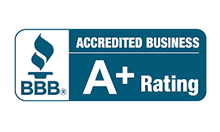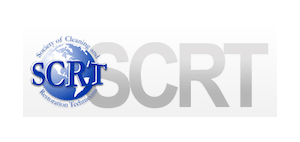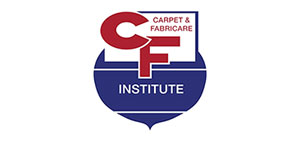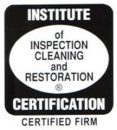Water damage can be devastating to your property, posing a significant threat to its safety and integrity. There are various types of water damage, each presenting different levels of potential hazards and requiring unique approaches to resolve. To help you navigate this complex subject, we’ve provided a comprehensive guide that delves into the three categories of water damage.
By familiarizing yourself with these categories, you’ll be better equipped to identify and understand the types of water damage that can occur in your home or business. This knowledge will enable you to take appropriate measures to restore your property and protect it from potential water damage in the future.
Key Takeaways
- Water damage can occur in different categories, ranging from clean water damage to highly contaminated water damage.
- Understanding the severity and category of water damage is critical in determining the appropriate actions for mitigation and restoration.
- The three categories of water damage include Category 1: Clean Water Damage, Category 2: Grey Water Damage, and Category 3: Black Water Damage.
- Each category of water damage requires a unique approach and presents different potential hazards to the safety of your property and health.
- Consulting with professionals when dealing with water damage is essential to ensure safety and timely restoration of your property.
Category 1: Clean Water Damage
If you experience clean water damage, this means that the source of the water is from a clean and sanitary source. This could include water from broken pipes, overflowing sinks, or rainwater entering your home. While this is the least severe type of water damage, if not addressed promptly, it can still cause significant damage to your property, furniture, and belongings.
It’s important to note that even though the water is considered clean, it can become contaminated if left standing for too long. This can lead to mold growth and further damage to your property. Therefore, it’s crucial to take immediate action.
If you’re dealing with fresh water damage, here are the steps you should take:
- Turn off the source of water to prevent further damage.
- Remove any excess water using a wet/dry vacuum or mop.
- Use fans and dehumidifiers to dry out the affected area thoroughly.
- Once the area is dry, sanitize any affected surfaces to prevent mold growth.
- Dispose of any items that cannot be salvaged, such as saturated carpets or furniture.
It’s always recommended to call a professional restoration company, especially if you’re dealing with extensive water damage. They have the expertise and equipment to ensure the water is completely extracted, and your property is thoroughly dried and restored to its pre-damage condition.
Category 2: Grey Water Damage
When it comes to water damage, Category 2, also known as grey water damage or contaminated water damage, is a step up in severity and risk compared to Category 1. Grey water damage occurs when the water is slightly contaminated and may contain chemicals, bacteria, or other organic materials. This type of damage can result from a variety of sources, such as malfunctioning appliances, toilet overflows with urine (but no feces), or sump pump failures.
It’s important to note that while grey water may not pose an immediate health risk, it can still cause damage to your property and potentially lead to mold growth if not addressed promptly. Additionally, prolonged exposure to and contact with grey water can increase the risk of illness or infection, making it crucial to take the necessary precautions when cleaning up and restoring the affected area.
| Signs of Grey Water Damage | Steps for Mitigation and Restoration |
|---|---|
| Stains or discoloration on walls or ceilings | Wear appropriate personal protective equipment, such as gloves and masks, when handling grey water |
| Musty or unpleasant odors | Extract water and remove any damaged materials, such as carpet or drywall, to prevent further contamination and spread of bacteria |
| Warped or buckled flooring | Use specialized equipment, such as air movers and dehumidifiers, to thoroughly dry the affected area and prevent mold growth |
| Visible mold growth | Sanitize and disinfect affected surfaces to eliminate bacteria and prevent future growth |
It’s important to contact a professional restoration company for grey water damage cleanup and restoration. They have the necessary equipment and expertise to safely and effectively mitigate and restore the damage while minimizing the risks to your health and safety.
Category 3: Black Water Damage
Category 3 water damage is the most severe and hazardous type of water damage. It involves highly contaminated water that may contain sewage, pathogens, chemicals, or toxic substances. This can occur from sewage backups, flooding from rivers or streams, or water intrusion from a hurricane.
If you suspect that your property has been affected by black water damage, it’s crucial to take immediate action. The contaminated water can pose a serious threat to your health and well-being, and the longer you delay the restoration process, the more damage your property will sustain.
| Signs of Category 3 Water Damage | What to Do |
|---|---|
| Visible signs of sewage backup or black water in your property | Evacuate the affected area and contact a professional water damage restoration company |
| Strong, foul odor coming from the water source | Do not attempt to inspect or address the issue yourself. Contact a professional service immediately. |
| Presence of mold or mildew in the affected area | Wear appropriate protective gear and contact a water damage restoration company to conduct a thorough inspection. |
Due to the hazardous nature of black water damage, it’s essential to consult with a professional restoration company that specializes in handling this type of situation. They will have the equipment and expertise necessary to safely remove the contaminated water, sanitize the affected area, and restore your property to its pre-damage condition.
It’s important to note that attempting to address black water damage on your own can lead to serious health risks and may result in further damage to your property. Always prioritize your safety and let the experts handle the restoration process.
Assessing the Severity of Water Damage
When facing any water damage, it’s critical to assess the severity of the situation accurately. By evaluating the extent of the damage, you can determine the appropriate measures to take for mitigation and restoration. Here are some steps to follow when assessing the severity of water damage:
- Visual Inspection: Look for visible signs of water damage, such as water stains, discoloration, or mold growth. Inspect the ceiling, walls, floors, and carpets for any visible damage.
- Moisture Testing: Even if the damage is not visible, it’s essential to check for moisture using a moisture meter. Moisture can seep into hidden areas and cause more damage, such as weakening the building structure or promoting mold growth.
- Understanding Signs of Structural Damage: Water damage can weaken the structural integrity of buildings, leading to potential hazards. Signs of structural damage include cracks in the walls or foundation and warped or buckled floors.
By accurately assessing the severity of the water damage, you can take appropriate measures for mitigation and restoration. For severe cases of water damage, it’s important to consult professionals to ensure safe and effective restoration.
Steps for Water Damage Cleanup and Restoration
If you’ve experienced water damage in your property, taking prompt action is crucial to prevent further damage and restore your home or business. Here are the steps you need to follow for a successful cleanup and restoration process:
Step 1: Safety First
Before starting the restoration process, it’s essential to ensure your safety and the safety of others. Make sure the electricity and gas supply are turned off, especially if the water damage is near electrical outlets or wires. If the water damage is more severe, consider wearing protective gear like gloves, boots, and a face mask to avoid exposure to contaminated water or mold.
Step 2: Water Extraction
The first step in the water damage cleanup process is to remove any standing water from the affected area. This can be done using a pump or a wet vacuum, depending on the amount of water present. Be sure to remove as much water as possible to prevent mold growth and further damage.
Step 3: Drying Techniques
The next step is to dry the affected area thoroughly. This can be achieved using fans, dehumidifiers, or other drying equipment. It’s crucial to ensure that the area is completely dry, as any moisture left behind can lead to mold growth or structural damage.
Step 4: Mold Prevention
Mold can start to grow within 24 hours after water damage, making it crucial to take measures to prevent its growth. Use an antimicrobial spray to disinfect the affected area and prevent mold from forming. If mold is present, it’s best to hire a professional mold remediation service to ensure it is safely and effectively removed.
Step 5: Repairing Structural Damage
If the water damage has caused any structural damage to your property, it’s essential to repair it promptly. This can range from replacing drywall or insulation to repairing the foundation or roof. Hiring a professional contractor can ensure that the job is done correctly and safely.
Step 6: Final Inspection
After completing the restoration process, it’s crucial to conduct a final inspection to ensure that everything has been restored to its original condition. This can include checking for any mold growth or signs of moisture, testing the air quality, and ensuring that all electrical and plumbing systems are functioning correctly.
By following these steps for water damage cleanup and restoration, you can ensure that your property is protected and restored to its pre-damage condition. Remember to prioritize your safety and consult with professionals if necessary.
Conclusion
Congratulations! You have now learned about the three categories of water damage and how to identify and assess the severity of water damage incidents. By familiarizing yourself with the different types of water damage, you can take appropriate actions to protect your property and prevent further damage.
Remember, clean water damage falls under Category 1 and poses the least severe risks, but still requires prompt attention to prevent further damage. Grey water damage, Category 2, contains contaminants that can pose a health risk and requires professional mitigation and restoration services. Lastly, Category 3 water damage, also known as black water damage, involves highly contaminated water and is the most severe and hazardous.
Assessing the severity of water damage is crucial in determining the appropriate measures to take for mitigation and restoration. Always prioritize your safety and consult professionals for more severe cases. Following the steps for water damage cleanup and restoration can help you recover from water incidents and ensure the integrity and safety of your property.
Thank you for taking the time to read this comprehensive guide on the three categories of water damage. We hope this information has been helpful and informative in protecting your property from water damage incidents.
FAQ
What are the three categories of water damage?
The three categories of water damage are Category 1: Clean Water Damage, Category 2: Grey Water Damage, and Category 3: Black Water Damage.
What is Category 1 water damage?
Category 1 water damage refers to incidents where the water originates from a clean and sanitary source, such as broken pipes or overflowing sinks.
What is Category 2 water damage?
Category 2 water damage occurs when the water is slightly contaminated and may contain chemicals, bacteria, or other organic materials. This can result from malfunctioning appliances or toilet overflows with urine (but no feces).
What is Category 3 water damage?
Category 3 water damage is the most severe and hazardous type. It involves highly contaminated water that may contain sewage, pathogens, chemicals, or toxic substances. This can occur from sewage backups, flooding, or water intrusion from a hurricane.
How do you assess the severity of water damage?
Assessing the severity of water damage involves visual inspections, moisture testing, and understanding signs of structural damage. This helps determine the extent of the damage and the appropriate steps for mitigation and restoration.
What are the steps for water damage cleanup and restoration?
The steps for water damage cleanup and restoration include water extraction, drying techniques, mold prevention, and repairing any structural damage. Following these steps will help you recover from water damage and ensure the safety of your property.


















